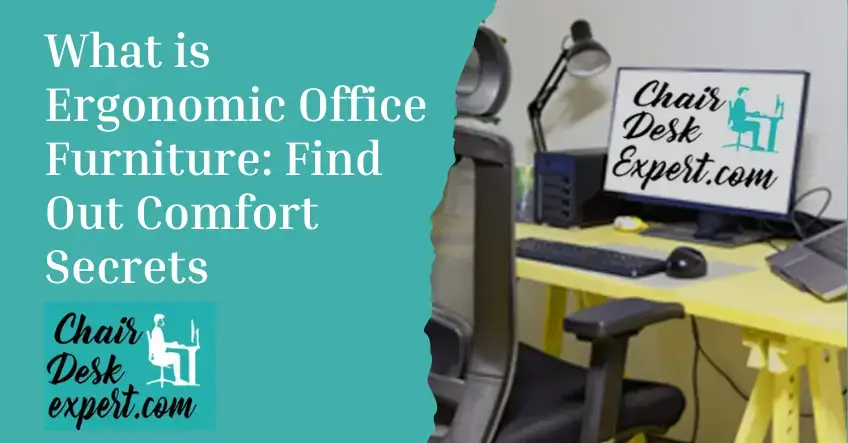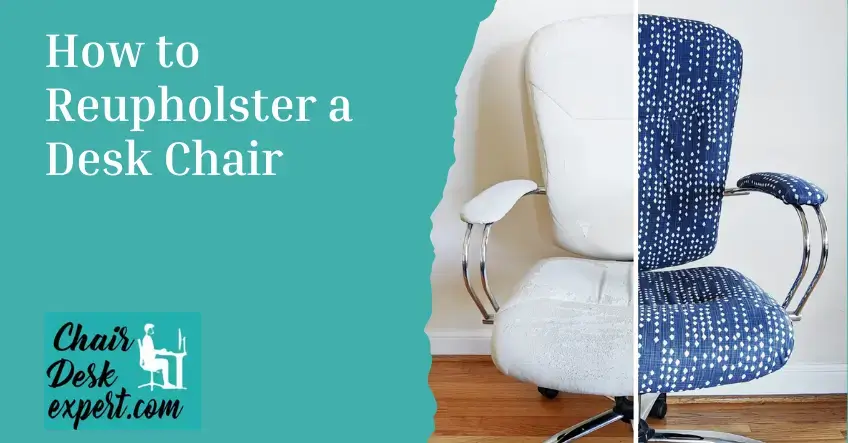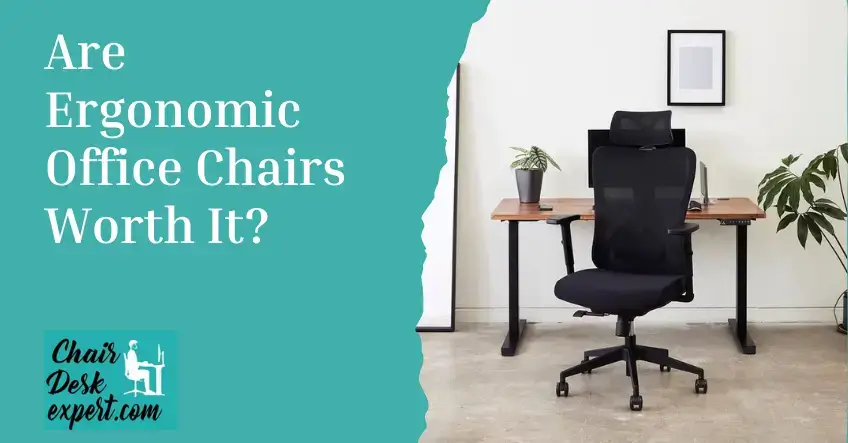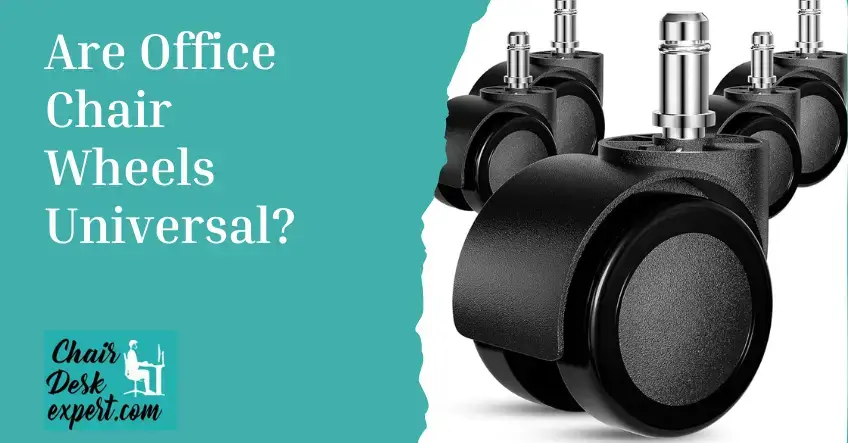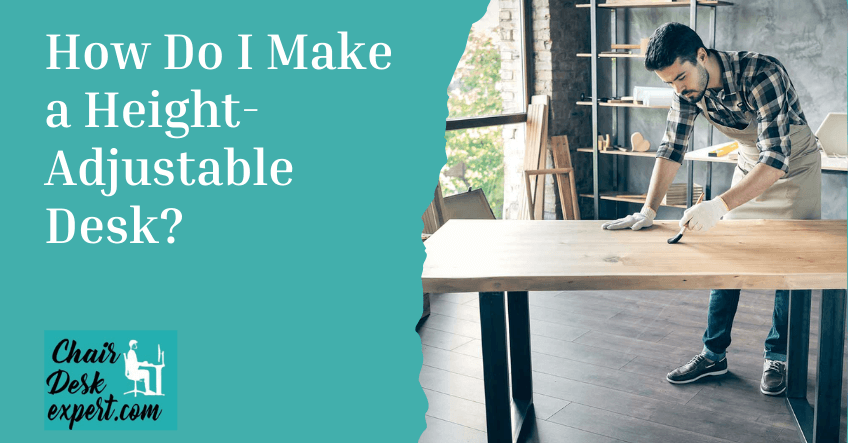Did you know that more than eight types of injuries can occur due to long hours of sitting in office chairs? Recent studies have found that over 80% of Americans suffer from lower back pain due to extended periods of office work.
One good solution is to use ergonomic office furniture like ergonomic chairs and desks. But what is ergonomic office furniture, and how can it help employees work long hours without developing health issues?
Ergonomic office furniture is designed to promote good posture and employee wellness through comfort features and innovative designs.
The human body is not designed to sit for long hours, and employees now prefer companies that value their health and comfort.
What is Ergonomic Office Furniture Meaning?
Ergonomics refers to the science of designing and arranging objects to make them easy and safe for humans. It’s also known as human engineering or biotechnology. This discipline studies how objects can be structured or configured to optimize ease and safety in human interactions.
For example, an ergonomic chairs like lumbar support, drafting chair are designed to provide optimal support for the human body, considering factors such as posture, comfort, support, and overall health.
Similarly, ergonomic office furniture consists of specially designed items intended to reduce work-related musculoskeletal disorders (MSDs) while improving comfort, efficiency, and the overall well-being of individuals in a workplace setting.
What is Ergonomic Office Furniture (Detailed Analysis)
Below is a detailed analysis of what is ergonomic office furniture and how it is beneficial for employees’ health for prolonged working.
1-Ergonomic Chairs
Ergonomic chairs are designed with the aim of providing optimal body support, encouraging proper posture, and minimizing discomfort.
They are highly designed office furniture that aims to transform the sitting experience. Unlike traditional office chairs, they prioritize the user’s comfort, health, and productivity by focusing on optimal posture support and customization.
The primary objective of ergonomic chairs is to counteract the adverse effects of prolonged sitting. Prolonged sitting often leads to discomfort, musculoskeletal issues, and reduced productivity. These chairs are engineered with many adjustable features to accommodate individual preferences and body dimensions.
Adjustability is a key hallmark of ergonomic chairs. They typically offer a range of customizable elements such as seat height, width, and depth adjustments.
This allows users to achieve an ideal seating position where their feet can comfortably rest flat on the floor, knees form a 90-degree angle, and thighs remain parallel to the ground. Such customization aids in minimizing pressure points and promoting better blood circulation, reducing the risk of fatigue and discomfort associated with extended sitting.
Furthermore, ergonomic chairs boast lumbar support features that cater to the spine’s natural curvature. Adequate lumbar support ensures proper spine alignment, preventing slouching and promoting a healthier sitting posture.
The ability to adjust the backrest tilt and recline allows users to find the most suitable angle to support their back and reduce strain on the spine and muscles.
Adjustable armrests relieve tension in the upper body and shoulders, while a supportive headrest reduces tension in the neck and upper torso.
When choosing the right ergonomic chair, it is essential to consider factors such as the duration of chair usage and personal comfort preferences. The material used in the chair’s construction, like breathable fabrics or cushioning materials, should be comfortable without causing discomfort or sweating during prolonged use.
Investing in an ergonomic chair tailored to individual needs is an investment in one’s health and workplace productivity because there are many disadvantages of using non ergonomic chairs. These chairs are not merely seats but ergonomic marvels meticulously designed to transform the sitting experience, ensuring a comfortable, supportive, and healthier posture throughout the workday.
2-Ergonomic Desks
Ergonomic desks, especially standing desks, have revolutionized how we approach office work. These desks offer adjustable heights that allow for both sitting and standing positions. They are designed to address the negative impact of prolonged sitting on health by allowing users to alternate between seated and standing positions effortlessly.
Prolonged sitting has been linked to various health issues such as obesity, type 2 diabetes, hypertension, and musculoskeletal injuries like back pain and repetitive strain injuries (RSI). To counter these concerns, ergonomic desks promote active working habits and allow users to break the sedentary cycle by seamlessly transitioning between sitting and standing throughout the workday.
The adaptability of ergonomic desks offers numerous benefits. They diminish the risk factors associated with prolonged sitting and aid in reducing musculoskeletal strain by providing adequate support during tasks like typing on a keyboard or transitioning between computer and paperwork.
However, a successful ergonomic workstation involves more than just an adjustable desk.
When transitioning to an ergonomic desk, it’s essential to be mindful of potential bodily discomfort due to sudden changes in physical activity. Going from prolonged sitting to extended standing can lead to discomfort in the back, legs, or feet.
Moreover, ergonomic desks come in various designs and functionalities. Some may offer manual adjustments, while others come with electronic controls allowing effortless alterations between sitting and standing heights.
Embracing ergonomic principles with an ergonomic desk is not just about altering the desk height—it’s a holistic approach to fostering a healthier work environment by encouraging movement and optimal postures throughout the workday. But you must must have a proper guide of standing at the standing desk.
3-Monitor Arm
Properly positioning computer monitors reduces strain and promotes comfort in an ergonomic office setup. It’s essential to place your monitor at an optimal height, angle, and distance to mitigate the risk of eye strain, neck pain, and other musculoskeletal issues. You can achieve this ideal positioning with a monitor arm, a monitor mount, or a desk mount.
A monitor arm is a versatile and adjustable accessory that you can securely attach to your desk or workstation. Its primary function is to suspend the monitor in an optimal position that caters to your needs, ensuring proper alignment for vision, posture, and overall comfort. These arms are available in various configurations to accommodate different monitor sizes and weights.
4-CPU Supports
CPU supports, also known as CPU holders, offer a solution by enabling the mounting of your PC under your workstation, effectively removing it from the floor space. This arrangement offers several benefits beyond just saving space.
One of the primary advantages of using CPU supports is that it helps reduce clutter and hazards in the workspace. Securing the computer tower underneath the desk eliminates the risk of tripping over cables or obstructing pathways, promoting a safer and more organized environment.
5-Ergonomic Keyboards and Mice
Ergonomic keyboards and mice prevent repetitive strain injuries (RSIs) and improve comfort during extended computer use. Traditional keyboards lack features to prevent strain from repetitive reaching and typing movements, which can cause fatigue and discomfort and lead to potential injury.
On the other hand, ergonomic keyboards are designed to optimize hand and wrist positioning, reducing stress and strain during typing sessions. They come in various designs, each catering to specific ergonomic needs:
Implementing these ergonomic practices minimizes strain and discomfort, enhancing overall comfort and reducing the risk of work-related injuries during prolonged computer use.
6-Gel Pads or Wrist Rests
Wearable wrist gel pads are designed for desk use to support mouse and keyboard wrists. These pads aim to alleviate pain, relieve pressure, reduce tension, and minimize stress on joints, muscles, and tendons while you work.
They provide a cushioned surface that enhances comfort during extended computer use, promoting better ergonomics and potentially reducing the risk of repetitive strain injuries. These gel pads create a more comfortable and supportive environment for your wrists, enabling you to work with reduced strain and discomfort.
7-Headsets
Headsets are an often overlooked but crucial component in creating an ergonomic workspace. While ergonomic keyboards, monitor risers, standing desks, and ergonomic chairs are more prominent devices, headsets are vital in promoting a healthy and productive work environment.
8-Laptop Stand
A laptop stand provides a stable base to elevate and adjust your laptop screen to an optimal height. This enhances comfort and reduces the strain on your neck, improving overall posture during extended computer usage.
Laptop stands are designed to raise the laptop screen to eye level, aligning it with your natural line of sight. This elevation helps minimize neck strain by allowing users to maintain a more upright posture instead of hunching over the laptop.
By placing the screen at the right level, laptop stands help prevent discomfort associated with prolonged use, such as neck and back pain.
9-Documents Holder
In most office settings, it is common for people to refer to physical documents while working on a computer. However, keeping these papers flat on the desk or below the monitor can cause neck and back strain, leading to discomfort and requiring constant bending and twisting.
To promote proper posture and prevent discomfort, it is recommended to use a document holder, also known as a copyholder, which provides an ergonomic viewing angle for the documents.
10-Cable Management
Despite increasing wireless technology, many offices still have to deal with cables and wires scattered across floors and walls. This not only looks messy, but it can also pose safety risks to employees. To address this issue, offices can implement effective cable management solutions, such as cable baskets and cable spines.
These accessories make organizing cables and wires easier, reducing the risk of tripping hazards and promoting better safety standards and ergonomics.
By keeping the workspace tidy and free of tangles, these solutions contribute to a safer and more comfortable work environment for everyone.
What are the Benefits of Ergonomic Furniture?
Ergonomic furniture is beneficial for employees’ health in several ways. If you want to know in detail what is ergonomic office furniture? and its benefits are, keep reading!
1-Alleviates Discomfort and Pain
Ergonomic office furniture, such as chairs, standing desks, and supportive keyboards, is designed to provide crucial support for employees during work hours.
This furniture promotes proper posture and helps to alleviate discomfort and pain caused by poor positioning, ultimately reducing the likelihood of work-related injuries and preventing conditions like arthritis.
Furthermore, it aids in realigning the spine, which can be extremely beneficial for those who spend long hours sitting at a desk.
2-Enhances -Productivity
Reduced discomfort leads to increased Productivity among employees. When individuals experience less pain or physical strain, they are better equipped to focus on their tasks, resulting in higher-quality work output.
Furthermore, ergonomic furniture’s capability to lower the risk of work-related injuries translates into fewer absences due to illness or injury, ensuring more consistent presence and efficiency in the workplace.
3-Fosters Employee Well-being
Ergonomic office furniture doesn’t just target physical wellness; it also positively impacts mental health. By investing in the well-being and health of employees through ergonomic solutions, companies convey a message of care and respect toward their workforce.
This investment fosters an environment where employees feel valued, increasing workplace satisfaction, happiness, and overall well-being.
4-Reduces Fatigue and Stress
Ergonomic furniture minimizes employee fatigue and stress, providing comfortable and supportive work environments. This decreases physical strain, enabling employees to remain focused and fresh throughout the workday.
5-Promotes Long-Term Health
The use of ergonomic furniture can positively impact long-term health outcomes. By preventing posture-related issues and minimizing the risk of musculoskeletal disorders, employees benefit from improved health in the long run, reducing the likelihood of chronic health problems associated with poor ergonomics.
6-Enhances Employee Engagement and Retention
When companies invest in ergonomic office furniture to prioritize the well-being of their employees, it can lead to higher employee engagement and retention rates.
When employees feel that their needs are being met and their health is being considered, they tend to be more motivated and committed to their work, which results in lower turnover rates.
FAQs: What is Ergonomics Office Furniture?
What is ergonomics in an office?
Ergonomics is the science of designing workstations to fit the worker’s capabilities. Office ergonomics aims to create a comfortable and efficient working environment for maximum productivity.
Are ergonomic office chairs worth it?
Sitting for extended periods is common, yet a good chair is often overlooked. An ergonomic chair can substantially improve your well-being and productivity by reducing pain and increasing efficiency.
What is the difference between ergonomic office furniture?
Office chairs = basic adjustments and minimal support. Ergonomic chairs are designed for the human body and offer advanced adjustability and targeted support for better posture, comfort, and well-being.
Final Verdict on What is Ergonomic Furniture:
This is our complete guide on what is ergonomic furniture? It helps you to decide what is useful for your employees. Ergonomic furniture is designed to enhance the human body’s comfort and well-being.
Although ergonomic chairs cost is more as compare to other office chairs but they promotes proper posture, reduces muscle and joint strain, and minimizes the risk of injuries. It also boosts mental well-being and productivity by creating a more comfortable and user-friendly work environment.
Investing in ergonomic furniture is an investment in employees’ health, productivity, and overall well-being, contributing to a more efficient and thriving workplace.

